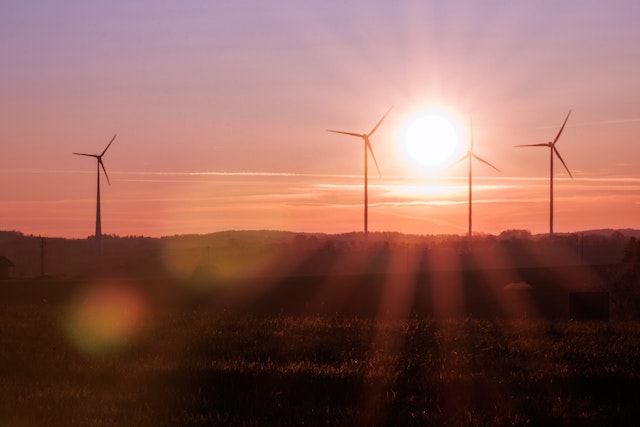
As we continue to grow and develop as a society, the demand for energy is only going to increase. But the good news is that we have some pretty awesome innovative solutions to help us transition to a more sustainable future. And guess what? It’s not just about saving the planet – it can actually save you money too! This post will take a closer look at the exciting technologies that are paving the way for a brighter and more sustainable future.
Understanding the Problem
Before we look into the solutions, a closer look at the problem is needed. The main issue is that our energy consumption is mainly based on non-renewable resources, such as coal, oil, and gas. These resources are finite and will eventually run out, but that’s not the only issue. Burning fossil fuels to produce energy releases harmful greenhouse gases, such as carbon dioxide, which contribute to climate change. So, what can we do to reduce our energy consumption and transition to a more sustainable future? Well, the answer lies in innovation and technology.
Renewable energy sources
Renewable energy sources offer a promising solution to our energy problem. Unlike non-renewable resources, they are infinite and won’t run out. Solar energy is one such source which harnesses the power of the sun to generate electricity without emitting any harmful gases. With significant reductions in the cost of solar panels over the years, it has become an affordable option for households and businesses. Another renewable energy source is wind energy which utilizes wind turbines to generate electricity. Hydro energy is another option, which uses the power of water to produce electricity, providing a stable and reliable source of energy. Finally, geothermal energy is generated by tapping into the earth’s heat, making it a viable option in certain regions. By investing in renewable energy sources, we can significantly reduce our dependence on non-renewable resources and cut down on harmful greenhouse gas emissions.
Smart Energy Management
Another innovative solution to our energy problem is smart energy management. With the help of advanced technology, we can manage our energy consumption more efficiently and reduce waste.For example, smart thermostats can learn your household’s heating and cooling patterns and adjust the temperature accordingly, saving you energy and money. Smart meters can also track your energy usage in real-time, allowing you to make informed decisions about your energy consumption. Another way to reduce waste is by using energy-efficient appliances. Energy Star-rated appliances use less energy than their non-rated counterparts and can help you save on your energy bill.
Energy Storage
One of the main challenges with renewable energy sources is that they are not always available when we need them. For example, solar panels can only generate electricity when the sun is shining, and wind turbines can only generate electricity when the wind is blowing.
To overcome this challenge, we need to find ways to store energy when it’s generated and use it when it’s needed. Energy storage solutions, such as batteries, can store excess energy generated by renewable sources and release it when there is a high demand for energy.
Smart Grids: Another Promising Solution
Another innovative solution to our energy problem is the implementation of smart grids. A smart grid is an advanced electricity distribution network that uses digital technology to monitor and manage the flow of electricity in real-time. It enables utilities to optimize the use of renewable energy sources and reduce waste, ultimately resulting in cost savings for both consumers and utility companies.Smart grids allow for two-way communication between the utility company and the consumer, which enables real-time monitoring of energy usage and can provide insights for more efficient energy management. Additionally, smart grids can automatically reroute energy in case of a power outage or other disruption, making energy delivery more reliable and resilient. With the growing adoption of renewable energy sources, smart grids will play an increasingly important role in the energy infrastructure of the future. By leveraging digital technology, we can maximize the efficiency and sustainability of our energy systems, this can lead to a cleaner and more sustainable future.
Innovative infrastructure
The future of infrastructure is closely linked to sustainable energy solutions, such as renewable energy sources and smart energy management. As we transition to a more sustainable future, we need to update our infrastructure to support these innovations. From the use of galvanized pipes which are coated with zinc to prevent corrosion and increase their lifespan. To new technologies such as 3D printing and automation are transforming the way we build infrastructure. With these advancements, we can expect to see more efficient and sustainable infrastructure in the future, leading to a better quality of life for communities around the world.
The Future of Sustainable Energy
As you can see, there are many innovative and sustainable solutions to our energy problem. By investing in renewable energy sources, smart energy management, and energy storage solutions, we can significantly reduce our carbon footprint and save the planet. But the journey to a more sustainable future doesn’t end here. As technology continues to advance, we can expect even more innovative solutions to emerge. From electric vehicles to smart cities, the possibilities are endless, and we’re only scratching the surface of what’s possible.
In the future, we can expect to see more energy-efficient homes and buildings, powered by renewable energy sources. We can also expect to see more electric vehicles on the road, reducing our dependence on fossil fuels. We can’t continue to rely on non-renewable resources and emit harmful greenhouse gases without consequences. But with innovation and technology, we can transition to a more sustainable future. So, let’s do our part and make a commitment to reduce our energy consumption and adopt more sustainable habits. Together, we can create a better future for ourselves and for generations to come.










